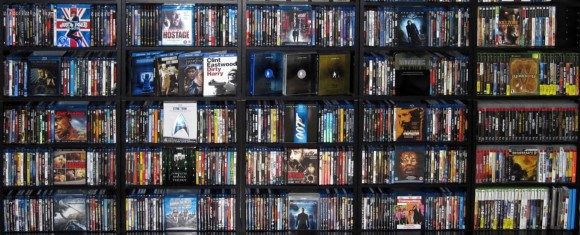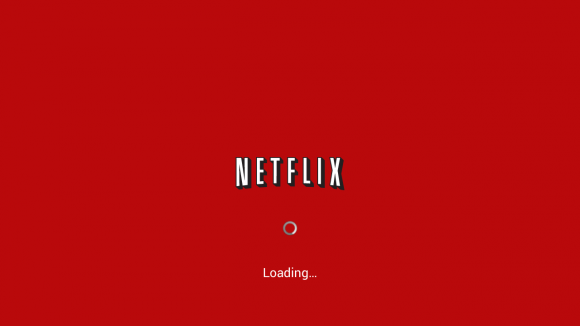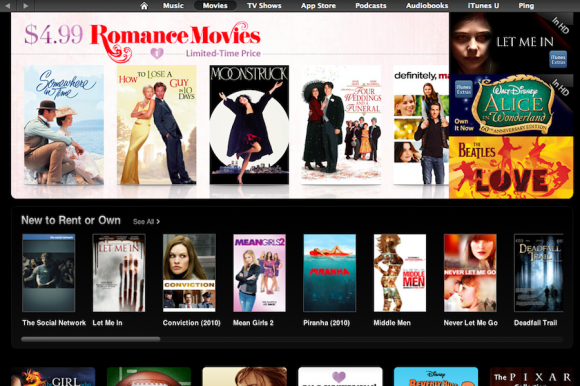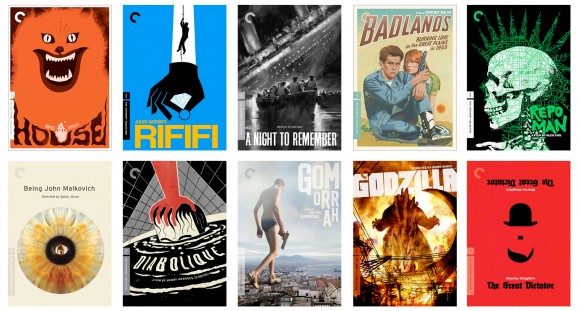There’s no denying that Netflix Instant Streaming and On Demand Rentals have changed the way people watch movies. The days of perusing the isles of the local Blockbuster are over. They’ve been replaced by the days of scrolling your mouse through increasingly specific genres, like ‘critically acclaimed violent thrillers with a strong female lead’. While the impact on the movie rental business is obvious and apparent, online streaming’s prevalence has a less overt, but equally large, impact on the home video market. As people’s Netflix queues get longer and longer, their DVD collections seem to be shrinking. As an ardent collector of DVDs and Blu-Rays, this makes me a little sad.
I’m certainly not saying that online streaming and Video On Demand are bad. People have access to more content than ever before, and that can only be a good thing. More films are available, and people watch films they never would have if it required them to do more than click a button. I doubt the independent film scene would be anywhere near as successful as it is without the advent of these services. However, I don’t think these platforms are a fitting replacement for a good movie collection.
Here are some reasons why movie lovers should all still be collecting movies.
1. Free to Cut the Cord
One of the big selling points of instant streaming is convenience. Before Netflix, it was probably a pain, if not impossible, to get a hold of obscure indie movies, foreign films, or every episode of Doctor Who. Now, we can get our greedy little hands on whatever we want. We can binge-watch entire series with the click of a button. Netflix assumes we’re not going to watch one episode; it auto-plays the next one. Because why would you just want one episode, when you could watch all the things? That is, until your internet goes out.
Despite the shimmering seamlessness of our tech-connected world, we do live in an age when the cable goes out from time to time. If all your films are streamed or in the mythical place that is ‘the cloud,’ when your connection is cut, you’ve got nothing. Your infinite fountain of media has become a sad little loading pinwheel that just keeps turning and turning. So, when the internet gods decide to dam up the endless stream of entertainment we now expect to be at our fingertips, it’s nice to be able to pop a Blu-Ray in and watch a movie. Even if the internet doesn’t go out, it’s comforting to have the ability to hold my movies in my hand. Which brings me to my next point.
2. Ownership
When you purchase a Blu-Ray, you own that Blu-Ray. It’s not going anywhere. That is, unless you physically move it, or your shifty roommate steals it. When you start dealing online, the idea of ownership is a lot more fluid. You’re not buying something tangible, like a DVD, you’re buying digital information. The way this content is delivered and your rights to it vary depending on what site you use. iTunes lets you download digital files for movies, whereas on Amazon, the content you purchase can be streamed or downloaded. Then there’s the fact that just because you bought a movie doesn’t mean you get to keep it. Take a look at this little gem from the Amazon terms of use: “Purchased Digital Content will generally continue to be available to you for download or streaming from the Service, as applicable, but may become unavailable due to potential content provider licensing restrictions and for other reasons, and Amazon will not be liable to you if Purchased Digital Content becomes unavailable for further download or streaming.” So, if you go on to your Amazon account one day and the movies you bought aren’t there anymore, bummer for you.
Streaming is a bit more straightforward: you don’t own anything your watching. You’re paying Netflix, or Amazon, or Hulu, or HBO Go for access to a library of films they license. Netflix spends billions of dollars a year licensing films and television shows to populate their site. The problem with licenses is that they expire. So if a license expires while you’re watching something, something that I know has happened to people, you’re not going to get to see the end of it. This is the big difference between subscribing to Netflix and owning a movie. Now when people ask you, “Why do you own that movie? It’s on Netflix.” You’re answer should be: “For now… for now.”
3. Movie Lending
Movie lending isn’t something people think about a lot. When was the last time you lent someone a DVD, or borrowed one from a friend? I’m guessing it was a pretty long time ago. Movie lending is something that online streaming, On Demand, and downloading cannot replicate. Before streaming, if you saw an awesome movie, like Ghost Shark and wanted your friends to see it, you lent them the DVD. Now, you can just text them and they add it to their Netflix queue where it will sit and never get watched. (PSA: Ghost Shark is sadly not currently on Netflix)
Online streaming is making the home video market less social. My friends and I used to borrow movies from each other constantly. It was like an underground movie rental nexus. Now, no one even thinks to ask. I still lend movies to people from time to time, mostly to my girlfriend’s parents, and even they’re starting to ask me, “Is this on Netflix?”
4. Picture and Sound Quality
All HD is not created equal. iTunes, Amazon, Netflix, Hulu, and CinemaNow all deliver films in HD. But the HD that these sites provide isn’t the same HD you get from a Blu-Ray. All HD means is that the image is comprised of 1920 by 1080 pixels. It’s what’s in those pixels that makes the picture look good. This is where bit-rate comes in to play; the more information per second, the better the image quality. On a good connection, a Netflix HD stream achieves 6 MB/s. Blu-Rays achieve bit-rates around 40 MB/s. This is how iTunes fits an HD movie in a 4 GB file.
It’s the same story with audio. Most Blu-Rays come with uncompressed 7.1 audio tracks. Most streaming titles have compressed PCM stereo, or 5.1 tracks. Single layer Blu-Rays can hold 25 GB of information, and dual layer discs can, naturally, hold 50 GB. Streaming sites just can’t deliver that amount of information, the files would be too big. Streaming technology is getting better all the time, but right now Blu-Ray is the best way to experience a film at home.
5. Extras
This one’s self-explanatory. Many DVDs and Blu-Rays offer a treasure trove of special features that illuminate the world of movie making and can deeply enrich a filmic experience. It’s also an added incentive to buy a film. Not only are you getting a movie, you’re getting deleted scenes, gag reels, commentaries, and behind-the-scenes featurettes. Streaming sites are starting to remedy this. iTunes has started offering digital extras with their films, some of which are exclusives. Netflix released commentary tracks for House of Cards. All of this is encouraging, but it still lacks behind what’s been available on disc for years now.
6. The Artwork
A lot has been said about the paltry state of movie posters. Just walk into any movie theatre and look at the walls. I doubt any of the artwork is going to give you that ‘I need to see that’ feeling in the pit of your stomach. Home video is a different story. DVDs and Blu-Rays cases often showcase beautiful artistic design. The Criterion Collection is known for this. When you buy a film digitally, you’re just buying content. When you buy a DVD or Blu-Ray, you can get something you can touch, and if it’s a beautiful case, gawk at.
Then there’s the look of the DVD shelf as a whole. Just like a bookshelf will always be more impressive than an eReader, a physical movie collection will always be more impressive than a digital one. I have a fairly substantial DVD collection, and it’s fun to have people browse the shelves. Is this showing off? Yes. Yes it is. But what’s the point in collecting something if you’re not going to show it off? No one ever collected art and then got all embarrassed about showing it to people. I don’t have Picassos, but I do have the Friday the 13th Box Set. It’s a pretty big deal. (It’s not, but that’s not going to stop me bragging about it.)
7. Selection Refinement
Here’s how I think streaming and movie collecting should coexist. Let’s look at the strengths of the two platforms. Internet streaming and On Demand options offer an impossibly broad selection to choose from. Blu-Ray offers better quality audio and video, and more robust special features. These two methods of home video consumption don’t have to be at odds. They can be two distinct stages of filmic consumption.
No one owns as many movies as the internet. So, in any film collection, there’s an act of refinement. Streaming’s big advantage is that it is cheap. For roughly $100 a year, you can watch whatever you want. All of the sudden you have the freedom to watch whatever movie your heart desires without that sinking, “I just paid how much for that?” feeling. A lot of what you watch will be trash, but every once in a while, you’ll find a film you fall in love with. Those are the films that should be in your movie collection. Use online viewing as a way to weed out the mediocre and disappointing films, and elevate the good ones to a physical purchase for the extras and better quality.
Online streaming isn’t going to go away, but I don’t think it will replace Blu-Rays anytime soon. One isn’t inherently better than the other. They satisfy different needs. By using the two platforms in tandem, not only do you get to experience the wealth of content the internet provides, but you also can build a fantastic and refined movie collection. If nothing else, it will give you something to point to when you’re old and telling your grandchildren about the olden days before media was beamed directly into your brain.





